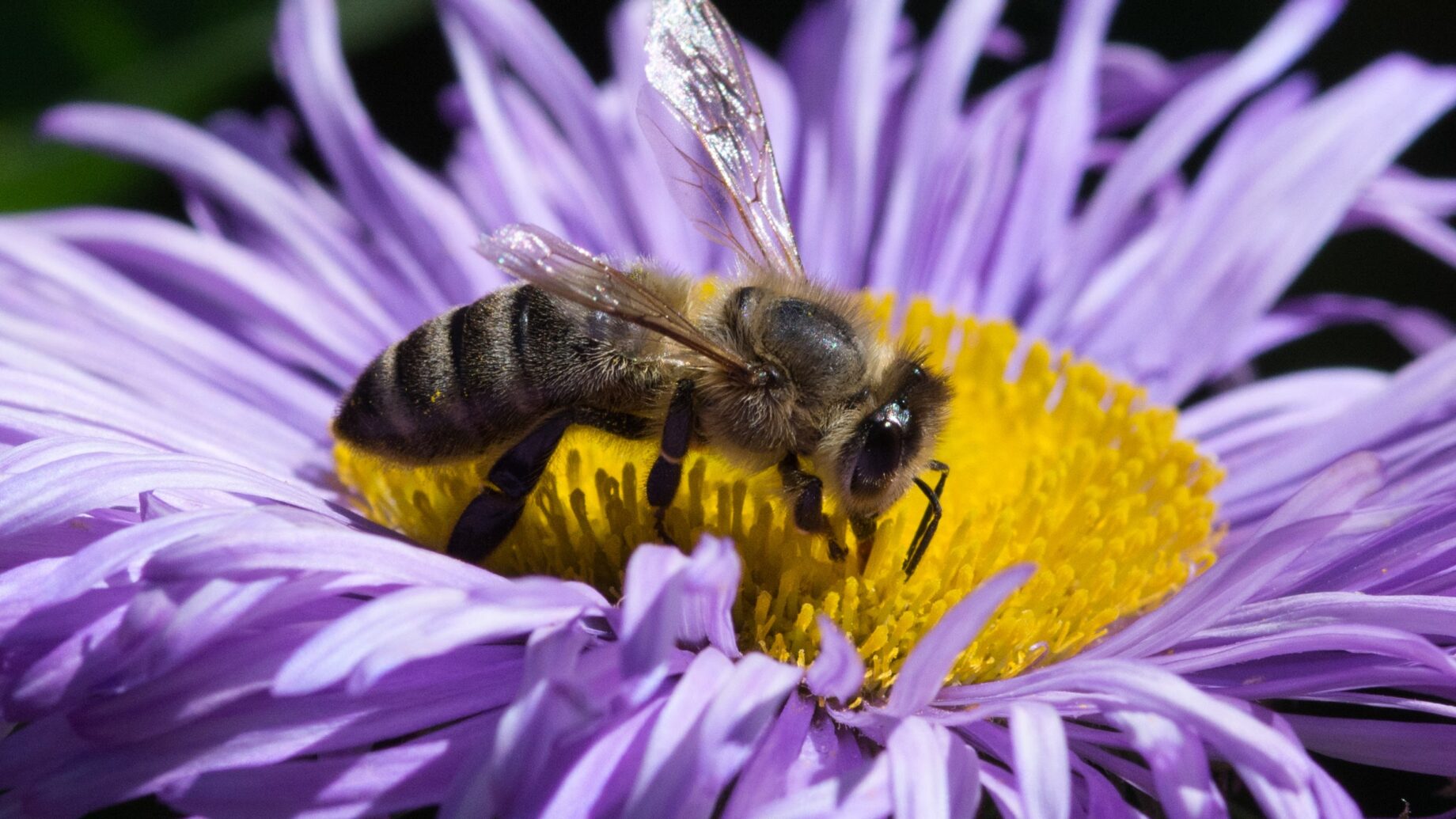Everyone can dance to some extent. But to be able to dance the salsa, a waltz or the cha-cha we need not only practice but also instruction and examples. And it seems that honeybees also need to observe more experienced individuals to improve their own dancing skills.
Bees of course don’t dance to the rhythm of music. Their so-called waggle dance is one of the most famous examples of a communication system in animals, sometimes compared to language. Bees use different symbols (dance properties) to communicate where to find food and how good it is. For a long time, it was believed that the behaviour is instinctive. It is indeed partly so, but a new study shows that young bees observe the dances of more experienced bees to make their own dance more precise.
Honeybees’ waggle dance
When a honeybee comes back to the hive from a foraging trip, she can inform others about a good food source. She performs what is called a waggle dance. She moves repeatedly on an eight-shaped path (see picture below). When she is on the straight line between the loops, she waggles her abdomen. This part of the dance is called the waggle run and is used to convey information to others.

The longer the duration of the run and the more waggles per run, the greater the distance to the food. The direction encoding is more complicated. In the hive bees dance on vertical honeycombs, and the angle between the waggle run and the direction of the gravity corresponds to the angle between the food source’s direction and the sun. The quality of the food is given by the number of dance repetitions and how quickly the bee performs the curved parts of the dance.
When a bee dances, others can’t see it in the darkness of the hive, but they gather all the information by touching the dancer’s abdomen with their antennae.
Only honeybees use the waggle dance and the general meaning of its elements is always the same. However, the relationship between the distance to the food sources and the duration of the waggle runs differs between species.
Honeybees learn to dance
Although the general dance moves seem to be instinctive, bees need practice and an example of experienced colony members to add precision to their moves and therefore to the information they convey.
Normally when bees are around one week old they start observing dances of other, usually more experienced, workers and perform their first dance a couple of days later. Their first dance is almost as good as the dance of more experienced bees. This is not the case if young bees lack demonstrators.
Researchers started a couple of experimental colonies with one-day-old bees who had no chance to observe experienced dancers before their first dance. This had a strong effect on the quality of their performance.
Their first dance was more erratic than a dance of young bees from normal colonies. They showed more variability in the waggle run angle and they were less consistent in indicating the food source quality. With time and experience, their accuracy in these respects improved, but their ability to indicate distance did not reach the level of bees from the normal colonies during the experiment (20 days). Their waggle runs took consistently more time, had more waggles and were more variable than the ones performed by bees from normal colonies. This suggests a lifelong disruption in distance communication as a result of a lack of experienced bees to learn from early in life.
Not only do honeybees learn from each other where to find food, but they also need to learn from others the nitty-gritty details of their waggle dance language. Distance encoding seems to be the most affected by the lack of examples of older bees and it is also the most variable between species. An interesting possibility presents itself: maybe without examples bees develop their own “dialect” to communicate distance? Future studies may show.
Polską wersję tego wpisu możesz znaleźć tutaj.
Photo: Bee – Barbara Felmeyer; Waggle dance: J. Tautz and M. Kleinhenz, Beegroup Würzburg. – Chittka L: Dances as Windows into Insect Perception. PLoS Biol 2/7/2004: e216. https://dx.doi.org/10.1371/journal.pbio.0020216, CC BY 2.5, https://commons.wikimedia.org/w/index.php?curid=1374858


Hi, Magda.
Very interesting! And your way of communicating the article is really great. Congrats!
Thanks a lot, Adriana!